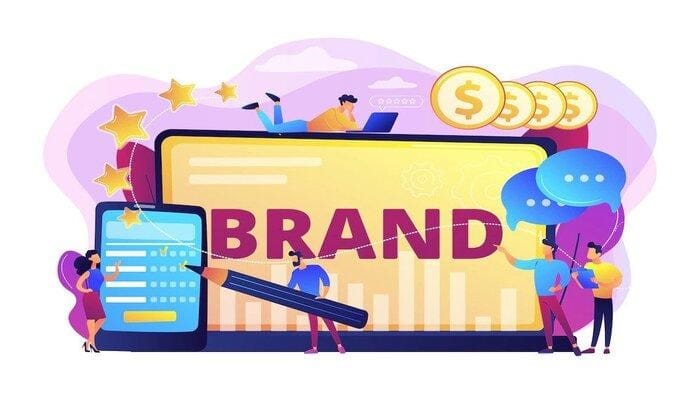Recall those ads that seem when you are watching videos on Youtube or banners that pop-up while visiting an online store? These are instances of how organisations adapt their sites — similar works for, paid as well as free mobile applications. Free applications are dominating the application market, with 96% in Google Play and 90.3% on App Store driving $71.3 billion in income. Be that as it may, those applications are free, so how do applications make money?

In spite of following a similar mobile application development process to make money android/ios application, not every business is enjoying the fortune of getting billions of dollars being moved to their accounts.
If you have or want to develop a free mobile application and need to get familiar with application adaptation strategies, this article is ideal for you. Beneath, we clarify how for make money from an application, and how to pick one that will function for your application.
How Much Money Do Free Apps Make?
Today, the business owner of a mobile device uses 7-8 applications every day. Simultaneously, just 5-10% of mobile applications users are prepared to purchase a paid application, and around 98% of benefits and downloads come from free mobile applications. By far most mobile application users like to use free applications, and this number is consistently rising. In the primary portion of 2019, the number of free application downloads in Google Play expanded by 16,4% and brought $41,9 billion up in income.
How truly do free applications make money: The most popular monetization strategies
Depending upon your business industry and application type, you can apply one monetization model or several at once. The list of application monetization models includes:
- Advertising and affiliate marketing
- In-application purchase
- Paid subscriptions
- Freemium
- Sponsorship
- Crowdfunding
Presently, we should see them in more detail.
1. Advertising and affiliate advertising
Seven out of ten free applications create money from running advertisements and advancing different businesses. To apply this most well-known method of free application monetization, you can charge:
- Cost-per-mile (CPM) or cost per impression. You get the payment for each 1,000 views on the promotion
- Cost-per-click (CPC). You get payment when the application users click on display ads.
- Cost-per-view (CPV). You charge sponsors for the numbers of promotion sees or the number of collaborations
- Cost-per-introduce (CPI). You are paid each time your application users introduce the application you promote
As may be obvious, there are various sorts of in-application ad fees as well as techniques for showing advertisements to application users. There are five different ways you can show advertisements to your application clients:
- Banners Ads or Display Ads. The banners ads appear at the top or lower part of the mobile device screen so the application user can openly use your application. However, the engagement rate of such advertisements is very low (0.1%).
- Video Ads. Such ads appear during normal stops of application utilisation and last 10-30 seconds. This ad category likewise includes rewarded video promotions when the application user is compensated for watching a full promotion video.
- Native Ads. Native advertisements, including sponsored content or videos, are integrated into the application layout and don’t occupy application users. Subsequently, clients consider Native promotions less bothering contrasted with different kinds of advertisements.
- Interstitial Ads. This sort of ad seems to be full-screen pop-ups showed when the user opens or closes the application. In this manner, the user can either close the advertisement or click on it to learn about the promotion.
Sponsorship and Influencer advertising
This kind of application monetization is like advertisements, however the thing that matters is more deeper integration to the application. Let us explain. Aside from simply running ads, you can put a sponsor’s logo or icon on the splash screen, footer, or integrate sponsored content with special offers right to your application. To make this kind of monetization model more beneficial, find sponsors with the same target audience. For example, on the off chance that you have a fitness application, you can find sponsors among wellness centers, fitness coaches, or healthy diet websites.
Influencer marketing is a bit different approach to sponsoring since you will deal, not with the business, but rather with an individual opinion pioneer, notable inside your ideal target group. Along these lines, such an opinion leader will promote your application to fans and draw in new customers to your application. You can also ask an influencer to turn into an ambassador for your application, which is a prevalent system among renowned brands.
2. In-App Purchases
With this application monetization model, you can sell various kinds of things, including:
- Consumable things that the user can use inside the application, for example, health points or digital currencies.
- Non-consumable things that could be used forever, like new games, maps, or as blocking.
In-application increases user engagement rates and has users to the screen. This monetization method includes integrating native application store payment gateways since application stores charge 3% from each in-application buy.
3. Subscriptions
You can try making money on free applications using paid subscriptions. Notwithstanding, this model works for just 5% of applications with high user commitment, like efficiency or instruction, music, or video streaming applications. This type of payment requires integrating third party payment gateways like Stripe or PayPal. Hence, application stores charge no commission. The application membership works in the following manner:
- After downloading a free application , the user gets a time for testing, normally a month, to attempt your application.
- At the point when the time for testing closes, in the event that the cser keeps using the application, they should purchase a membership.
There are two sorts of subscriptions:
- Non-renewing subscriptions when the client purchases an application membership for a specific period, as in one, three, or a half year. After the finish of the membership time frame, the customer should purchase another membership manually, so there will be no unexpected bills. This sort of application monetization functions well for occasional applications like cultivating, game, or hunting.
- Automatically renewing subscriptions implies the application consequently charges customer feed every month, a half year, or one time per year.
4. Freemium
You can make money from a free application using the freemium model, which is like the membership model. The main distinction is that the application user can use the free application version with basic features with no time limitations. Yet, to get an advanced feature rich application form, users should pay month to month or yearly charges.
5. Sponsorship
Sponsorship is yet another method of making an earning from a mobile app. This model is usually incorporated with those applications that already have regular users, and is suitable when connecting with brands from the same market niche.
When discussing in detail around how apps make money via this monetization strategy, there are two deals to go with –
- Equally divide revenue from the mobile app
- Set a monthly sponsorship fee.
6. Crowdfunding
Crowdfunding, another funding model to consider this year, is also one of the beneficial ways of monetizing applications for free.
Here, you exchange your application idea or distribute a MVP version on platforms like KickStarter, CrowdFunder, Indiegogo, and Fundable to raise funds and do the needful in the field of marketing.
End Note
Free mobile applications have a more significant market share of the overall industry contrasted and paid applications. There are many techniques for free mobile app monetization, and every one of them has an alternate user engagement rate and will create an alternate measure of pay. We suggest choosing the monetization model based on your application niche, its motivation, and your ideal target audience.
To make your free application much more profitable, you can combine different monetization methodologies:
You can run ads and offer users a paid advertisement free application version, which is a mutually beneficial arrangement for yourself as well as your clients.
You can likewise combine in-application buys and memberships, or advertising and memberships.
We, as a leading mobile app development company, help our customers to use the most recent technologies ideally and give better ROI to their business. Reach out to us today to know more on how we can assist your business to achieve its ideal results.
If you find this article valuable, I’ll be happy if you’ll share it with your friends.
Author Bio:
Maulik Pandya is a lifelong Analyst, Founder of Evince Development & Eatance. He has good knowledge in Coding, Business Analysis, Providing Enterprise Solutions, Project Management, Sales Consultation, Marketing, Operation Management, Talent acquisition, Mentorship, and Leadership.
Apart from his professional life, he is a good Husband, Father of two beautiful Daughters, a Generous Friend, Garba Lover, Zumba Enthusiast, a Blogger, and a Helping hand to everyone.
Author Pic:

Reach Out On Social Media:
Twitter:
https://twitter.com/evincedev/
LinkedIn:
https://www.linkedin.com/company/evince-development/
Instagram:
https://www.instagram.com/evincedevelopment/
Facebook:
https://www.facebook.com/EvinceDev
Pinterest:

There are a lot of local entrepreneurs in the Philippines who want to create their own brand here in GoNutrients. I am the (POSITION) and we have been getting good feedback from our clients that the products that we assisted for them have been doing well in the market. I work in GoNutrients and they manufacture the products from scratch depending on the clients’ preferences. If anyone’s interested in having their own brand of product, feel free to contact me so that I can further assist you. We offer our services locally and abroad since we have about more than 500 clients worldwide. We also assist in: the restrictions of FDA and layout guidelines, mass produce in toll packaging and deliveries, and the process of product development.